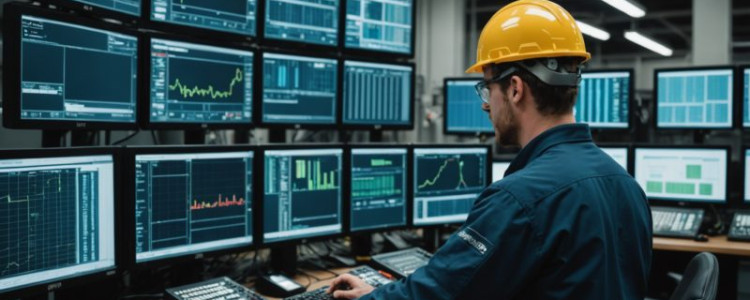Energy quality is a vital concern for industries and businesses that rely on stable and efficient electrical systems. Fluctuations in energy supply, harmonics, and other distortions can lead to equipment damage, increased operational costs, and diminished efficiency. To combat these challenges, various compensation components have been developed to ensure optimal energy quality. This article explores the importance of energy quality and compensation components, their types, and factors to consider when purchasing them from a reputable source such as prof-elec.fr.
The Importance of Energy Quality
Energy quality refers to the stability and reliability of electrical supply. High-quality energy ensures that equipment operates effectively, reducing maintenance costs and enhancing productivity. The following points highlight the significance of maintaining good energy quality:
- Equipment Protection: Poor energy quality can lead to malfunctioning or premature failure of electrical components.
- Operational Efficiency: High energy quality allows machinery to run at optimal capacity, minimizing downtime.
- Cost Effectiveness: Reducing energy waste through better quality translates to lower electricity bills.
- Environmental Impact: Efficient energy use contributes to a lower carbon footprint, supporting sustainability efforts.
Understanding Compensation Components
Compensation components play a critical role in improving energy quality by correcting issues such as voltage sags, harmonics, and reactive power. The following subsections provide detailed insights into the various types of compensation components available in the market.
Types of Compensation Components
1. Power Factor Correction Capacitors
Power factor correction (PFC) capacitors help improve the power factor of electrical systems, reducing reactive power demand. A better power factor can lead to lower electricity costs and reduced load on transformers. These capacitors come with various ratings and specifications depending on the system requirements.
2. Harmonic Filters
Harmonic filters are designed to mitigate harmonic distortions in electrical systems. They can be active or passive, with active filters providing advanced capabilities to adapt to changing load conditions. Reducing harmonics not only protects sensitive equipment but also enhances the overall efficiency of the power system.
3. Voltage Regulators
Voltage regulators maintain the voltage levels within specified limits, ensuring that equipment receives a stable supply. By compensating for voltage fluctuations, these devices protect against overvoltage and undervoltage situations, safeguarding electrical components and enhancing their lifespan.
4. Surge Protectors
Surge protectors prevent damage caused by voltage surges, which can occur due to lightning strikes or switching actions in the power grid. By absorbing excess energy, these devices protect sensitive electronic equipment from potential harm.
Factors to Consider When Purchasing Compensation Components
Choosing the right compensation components is crucial for optimizing energy quality. Below are several factors to consider during the purchasing process:
- Specification and Compatibility: Components must meet the specific requirements of the electrical system to ensure compatibility and effectiveness.
- Quality and Reliability: Look for components from reputable manufacturers known for their quality and reliability. This ensures longevity and performance stability.
- Cost vs. Benefit: While pricing is essential, it should not be the sole deciding factor. Evaluating the long-term benefits of investing in high-quality components can lead to significant savings in maintenance and operational costs.
- Technical Support and Warranty: Purchasing from suppliers that provide technical support and a comprehensive warranty can help address any issues that may arise after installation.
Catalog and Pricing at ProfElec.fr
Finding high-quality energy quality and compensation components can be a daunting task, but platforms like ProfElec.fr offer a comprehensive catalog that simplifies this process. Here is an overview of what you can find on their site:
| Component Type | Description | Price Range |
|---|---|---|
| Power Factor Correction Capacitors | Devices that improve power factor and reduce electricity costs. | €100 — €800 |
| Harmonic Filters | Filters designed to reduce harmonic distortions in electrical systems. | €500 — €3000 |
| Voltage Regulators | Equipment that stabilizes voltage levels, ensuring optimal performance. | €200 — €1500 |
| Surge Protectors | Devices that protect against voltage surges and spikes. | €50 — €500 |
Conclusion
Investing in high-quality energy quality and compensation components is critical for maintaining efficient and stable electrical systems. With numerous options available at ProfElec.fr, businesses can choose from a wide range of products designed to meet their specific needs. By considering factors such as specification, quality, and cost-effectiveness, companies can select the right components to enhance their energy efficiency and safeguard their equipment. Making informed decisions in this area will not only optimize operations but also lead to significant long-term benefits.
This article offers a comprehensive overview of the importance of energy quality and the different types of compensation components available, along with guidelines for making informed purchasing decisions. The structured format with various HTML elements enhances readability and engagement with the content.






